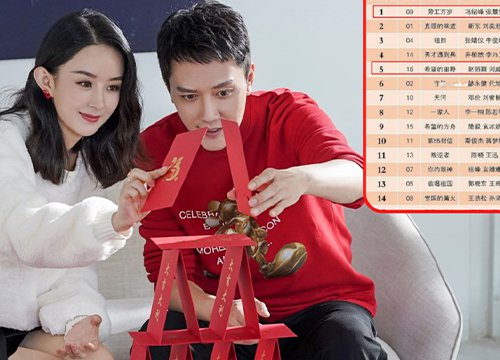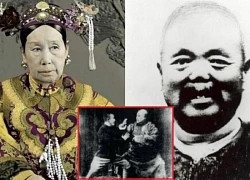The older sister divorced, the younger sister married her brother-in-law, opening a persistent family tragedy

3 | 0 Discuss | Share
The history of construction of the Taj Mahal is associated with the story of the undying love of emperor Shah Jahan (who ascended the throne in 1627) with his beloved wife, Queen Mumtaz Mahah. She unfortunately died at the age of 38 after giving birth to her second child and the 14th child of the king.
The Taj Mahal, a famous temple in India, is considered a symbol of the undying love between Emperor Shah Jahan and Queen Mumtaz Mahal. The Taj Mahal is located in the city of Agra in the state of Utar Pradesh in northern India. The temple was built of white stone on a large, harmonious space, exalting its pure and beautiful beauty. With typical Indo-Islamic architecture, the Taj Mahal shimmers in the blue sky like a precious jewel that ecstatic anyone who has the opportunity to admire.
Emperor Shah Jahan and Queen Mumtaz Mahal
According to legend, on a beautiful day in 1607, a great court ceremony took place. That day, the nobles of the palace went to buy perfumes, evening gowns, and creams. According to custom, men are not allowed to enter the private market of Meena, if they convert, the executioner will cut off their hands and feet. But there are exceptions, on very special days, when the role is reversed, like the canaval of Western countries. Meena market then opened, crowds flooded in, there were servants, ordinary people of all walks of life. The prostitutes who flocked in became very chaotic calling each other, music and dancing was the atmosphere of the carnival. Young aristocrats competed in eloquence, how to find the best rhyme, the most spiritual couplets to attract the attention of young girls.
Prince Khurram, to become the fifth Emperor of the Mogul dynasty, the son of King Jahangir, the grandson of Akbar, was a handsome young man of 16 years old whose talents were recognized by many. Known for: courageous, warlike temperament, gifted in poetry, good singing, and beautiful writing ... At Meena market, the man suddenly seemed motionless when he saw the beautiful 15 year old princess Arjumand Banu Begam. . It's the thunder of love! The next day, the prince asked his father for permission to marry Arjumand.
King Jahangir's father accepted the Prince's offer, but the king requested that the date be changed to another date according to the astrologers in the court. Then a year passed, and Prince Khurram got married, but not with the one he once loved, as suggested to his father at first, but with the princess of Persia. The Islamic custom was polygamy, so the princes of the Mughal dynasties would have to maintain a large number of concubines.
But the lovers had to wait five years, and could neither speak to each other nor exchange before they could marry on the date set by the court astrologers, which was March 27, 1612. At this time, Prince Khurram had two wives.
The day had come, according to Islamic custom the ceremony took place at the house of the newlyweds, but at midnight the king summoned his guests to join the feast, a rare delight. Under the lovely beauty of the bride, the king conferred on her many noble titles and renamed her. From now on, she will no longer be the princess of Persia, but her new name is "Mumtaz Mahal", which means "the most beloved person in the palace".
After the wedding day, the newlyweds fell in love with each other without leaving half a step, Mutaz Mahal is very beautiful, has a noble heart, and is respected by everyone, and she is considered as an ideal woman. As for the prince, he became more and more mature and manly, only 16 years later, on January 4, 1628, he was promoted to the Mughal throne and took the title of Emperor Shah Jahan. The king's enthronement celebration lasted for a whole month, but Shah Jahan quickly found many problems arose in his vast reign, unexpectedly too superstitious.
However, the love affair with Mumtaz Mahal is still as good as ever. During 19 years of marriage, the king gave birth to 14 children, but only 7 remained. In 1630, while campaigning against the separatists Khan Jahan Lodi, Emperor Shah Jahan allowed Mumtaz Mahal to accompany her to the battle, even though she was pregnant with her second child at the time. The day of the birth was foretold and the emperor sent a good message: the 14th child, a healthy baby girl, had just been born, but there was no news from the mother. Other messages were also sent, but she remained silent. The Emperor understood that something was amiss: Mumtaz Mahal fell gravely ill after giving birth and demanded that the Emperor return immediately. Shah Jahan quickly got on his horse to go to his beloved wife, and did not want to be away from her anymore. One morning, she fell asleep, when she was 38 years old. According to the surviving records, King Shah Jahan was heartbroken after Queen Mumtaz died. He even ordered localities to mourn the queen for two years.
During her lifetime, Mumtaz Mahal was so loved and trusted by the king that she was given the royal seal, and was constantly written by contemporary poets praising her beauty, charm and kindness. After the death of his beloved wife, Shah Jahan retired to a private room without court for a year. When he reappeared, his hair was white, his back was hunched, and his face was full of wrinkles. Shah Jahan spent the rest of his life directing the construction of the mausoleum at Agra. Unfortunately, however, he was usurped by Aurangzeb, his son and his beloved wife Mumtaz Mahal. Prince Aurangzeb killed his three half-brothers and imprisoned his father in the Agra fortress. Until the end of his life, Shah Jahan was only allowed to stay in the tower with a balcony overlooking the Taj Mahal. He could only see his wife's grave from afar, but could not visit her. This scenario almost repeats Shah Jahan's failed coup against his father Jahangir 36 years ago.
The death of his beloved wife made Sac Giahan extremely sad. He always started to build a tomb for his wife as he promised.
Immediately, the most famous builders were invited to Agra to plan the construction of the Queen's tomb. Sac Giahan chose the project of the Indian architect Istat Han Effendi to follow the model of the Tuoc mausoleums.
A huge construction army of 24,000 men was formed. The most precious colored marbles are transported from all over the world to Agra. In 1632, construction at the Taj Mahal was started. For 24 years, 24,000 workers worked hard and spent 40 million rupees.
Taj Mahal was built on a large rectangular land (580 m long, 304 m wide), with spectacular, harmonious landscape around. The main architecture of the mausoleum is an octagonal-bottomed castle, built of white marble and red sandstone on a very high base. Standing in the middle of the blue sky is a massive, majestic 75m high white marble dome surrounded by four smaller round arches. At the four corners, there are four pointed towers up to 40 m high. In the mausoleum, there are many frills carved with 12 precious stones, decorated in traditional Indian style.
In the center of the large, bright second-floor room are two pale pink marble coffins, decorated with botanical patterns and Arabic inscriptions from the Koran. But in these coffins there are no remains of the deceased. The two coffins on the second floor are just representations of the real coffins downstairs.
According to the concept of Islam, from real coffins, the souls of the dead fly up to enter the coffins on the upper floor, from there, through the dome to the sky, to the throne of Allah (Arabic words written in Arabic). al-Ilad). Mumtaz and Giahan's remains were placed in two coffins downstairs.
The Taj Mahal is indeed created with the flesh and blood of the Indians and has become one of the masterpieces of human architectural art. The Taj Mahal is worthy of the name of the Pearl of Indian temples or the dream of a fairy appearing in white stone.
This symbolic work of eternal love is famous for its splendid beauty and romantic story, but there are many other things that not everyone knows.
The four towers around the Taj Mahal are placed further away from the main building than usual, so that if they fall, they won't damage the main mausoleum.
During the British domination of India, the garden around the mausoleum was renovated in the style of a garden in London. Before that, the garden of the Taj Mahal was planted with many roses and daffodils.
The Taj Mahal has a mosque and is still active. Every Friday, the mausoleum is closed so that devotees can come inside to pray.
According to legend, the artists and architects involved in the construction of the Taj Mahal were killed so that they could never "build such a beautiful structure again". But historians say they were only required to sign the contract.
Taj Mahal is King Shah Jahan's picture of Queen Mumtaz's whereabouts in heaven. About 20,000 people worked around the clock for 22 years (1632-1653) to complete this huge mausoleum. The construction cost of the Taj Mahal amounted to 320 million rupees (equivalent to 1 billion USD at that time).
Ustad Ahmad Lahauri, who is considered the chief architect of the Taj Mahal, is not an Indian but a Persian from Iran.
King Shah Jahan reached the mausoleum by boating on the Yamuna River behind the Taj Mahal.
Shah Jahan's other wives and his most beloved servants are buried in mausoleums just outside the Taj Mahal.
More than 1,000 elephants were used to transport heavy materials during the construction of the mausoleum.
There are 28 types of precious and semi-precious stones inlaid into the marble at the Taj Mahal. Turquoise was brought from Tibet, jade from China, white marble blocks - the main building material - were brought from Rajasthan.13. After the Taj Mahal was completed, Shah Jahan was imprisoned by his own son - Aurangzeb - in 1658. The king could only see the Taj Mahal from the window for the last 8 years of his life.
The white granite part of the mausoleum is turning yellow due to the high air pollution in Agra. Only electric vehicles are allowed near the mausoleum and the government has announced an environmental protection zone of more than 10,000 square kilometers around the Taj Mahal to control pollution here.
The Taj Mahal is cracking at an alarming rate due to a lack of groundwater below the structure. The wooden foundation, formerly flooded, is slowly decaying. Even the towers began to tilt.
At each time of day, the Taj Mahal has different colors. Many people think that this change is like a woman's character.
In the 19th century, British soldiers carved out precious stones on the mausoleum walls. Towards the end of the 19th century, the British governor, Sir Curzon, ordered the reconstruction of the mausoleum and donated a large lamp hanging in the Taj Mahal.
India's Nobel Prize-winning poet, Rabindranath Tagore, likened the Taj Mahal to "a tear on the cheek of time".
Inscriptions on the tomb describe and praise Queen Mumtaz.
After his death, Shah Jahan was brought into the Taj Mahal and laid to rest next to his beloved wife.
Islamic tradition forbids the decoration of graves. So King Shah Jahan and his wife were actually buried in a simple crypt below the Taj Mahal.
The Taj Mahal was recognized as one of the new seven wonders of the world in 2007 with more than 100 million votes.
In 2008, a Bangladeshi filmmaker created a replica of the Taj Mahal at a cost of US$56 million so that his impoverished countrymen in Bangladesh could enjoy this famous monument without having to pay the bills. to India. This "cloning" also took up to 5 years to complete in the context of full modern equipment.
A luxury shopping, events and hotel complex inspired by the Taj Mahal has been built in Dubai. This place is named Taj Arabia, meaning it is a copy of the Taj Mahal but is 4 times larger than the original and is estimated to be worth up to 1 billion US dollars.
Youth of May - Lee Do Hyun's explosive visuals made sisters race to marry him  team youtuber10:48:21 25/05/2021Youth of May - Youth of May starring the monster Baeksang - Lee Do Hyun and Go Min Si opened extremely high scores. on Douban. Youth of May (Vietnamese title: Youth of May). Surpassing even Song Joong Ki's Vincenzo sunbae After airing the first episodes, Youth of May - Youth of May by...
team youtuber10:48:21 25/05/2021Youth of May - Youth of May starring the monster Baeksang - Lee Do Hyun and Go Min Si opened extremely high scores. on Douban. Youth of May (Vietnamese title: Youth of May). Surpassing even Song Joong Ki's Vincenzo sunbae After airing the first episodes, Youth of May - Youth of May by...

3 | 0 Discuss | Share

2 | 0 Discuss | Share

1 | 0 Discuss | Share

4 | 0 Discuss | Share

2 | 0 Discuss | Share

3 | 0 Discuss | Share

4 | 0 Discuss | Share

5 | 0 Discuss | Share

1 | 0 Discuss | Share

2 | 0 Discuss | Share

5 | 0 Discuss | Share

4 | 0 Discuss | Share



3 | 0 Discuss | Report